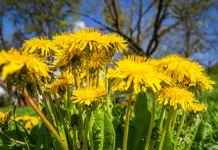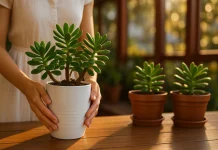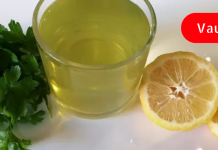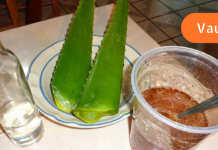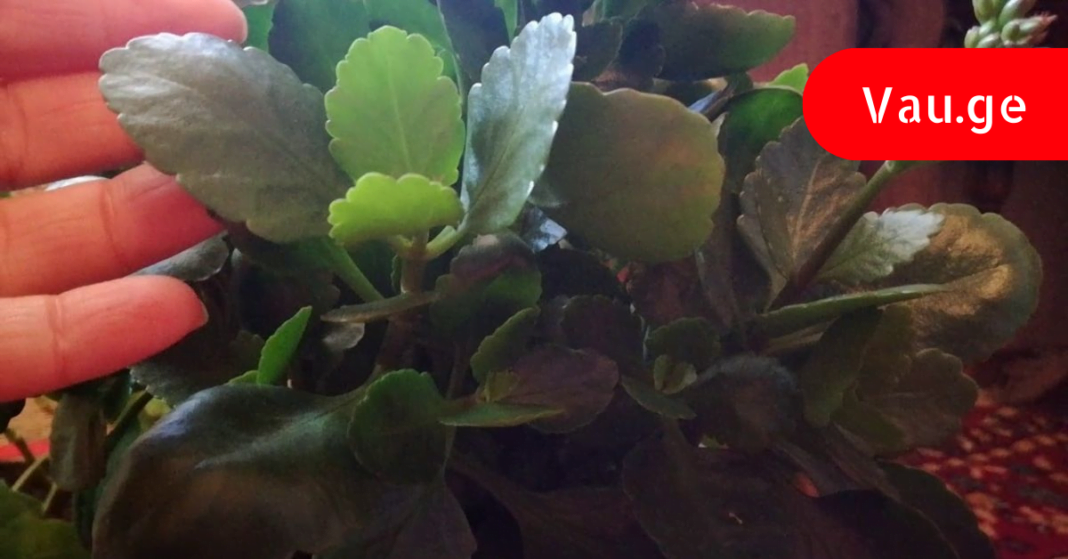Kalanchoe juice contains a rich composition of bioactive compounds including flavonoids, tannins, vitamin C, polysaccharides, various organic acids, and multiple essential minerals.
When stored in a dark place at low temperatures, bio-stimulants accumulate in the plant. These bio-stimulants are crucial for the treatment of many diseases and contribute to the plant’s wide-ranging therapeutic properties.
To prepare the juice, washed leaves and stems are stored in the refrigerator at temperatures between 5-10°C for no longer than 7 days. After this period, the plant parts are blended into a uniform mass and then strained. If needed, the juice can be sterilized or preserved with alcohol, allowing it to be stored for up to one year without losing its medicinal qualities.
Use of Kalanchoe for Treating Common Cold (Rhinitis):
Aloe juice drops are administered into the nose, 3-5 drops at a time, 4-5 times a day. For nasal congestion relief, fresh Kalanchoe juice mixed with 30% honey is recommended for nasal drops. At the first sign of nasal discharge in children, 1-2 drops of Kalanchoe juice are applied in each nostril. This treatment often triggers active sneezing but stops the cold from progressing further. For colds, an equal mixture of Kalanchoe juice, honey, and lemon juice is used to enhance recovery.
During Influenza and for Prevention:
To protect the nasal mucosa and reduce the risk of infection, the mucous membrane should be treated with Kalanchoe juice 2-3 times daily. This method is believed to help avoid epidemics. It is commonly thought that households with 2-3 pots of Kalanchoe plants have a lower likelihood of flu spreading among family members.
Treatment of Sinusitis:
The juice should be diluted with water in a ratio of 1:2 and then instilled into the nostrils, one drop per nostril. Continuous use for one week often results in complete relief of sinusitis symptoms.
For Tuberculosis:
Take one teaspoon of Kalanchoe juice diluted with water in a 1:2 ratio twice a day after meals. This use supports general health and respiratory system function during tuberculosis treatment.
In Cases of Ear Infections:
1-2 drops of juice should be consumed orally 3-4 times a day. Additionally, instilling 1-2 drops into the ear canal 3-4 times daily can relieve symptoms and speed healing.
For Gum and Oral Inflammation:
Rinse the mouth thoroughly with Kalanchoe juice but do not swallow. After rinsing, it is important to rinse the mouth with plain water to remove residue. This practice helps reduce inflammation, bacterial growth, and promotes oral hygiene.
Kalanchoe Alcoholic Tincture:
To prepare the tincture, pour 200 ml of 40% alcohol over 2 teaspoons of crushed Kalanchoe leaves and let it sit in a warm room for 10 days. After straining, the tincture is ready for use, especially in compresses. For ear inflammation, 1-2 drops of the tincture can be instilled into the ear canal at night to reduce pain and infection.
Therapeutic Properties of Kalanchoe Juice:
Kalanchoe juice is minimally toxic and exhibits strong anti-inflammatory and bactericidal effects. It accelerates wound healing, has a hemostatic effect (stops bleeding), and is therefore used for treating ulcers, bedsores, wounds, burns, and frostbite.
Fresh juice stops bleeding, treats furuncles (boils), skin rashes, eczema, burns, cervical erosion, and breast fissures.
Not only does it destroy bacterial infections, but it also shows antiviral activity. This juice is effective in treating tonsillitis, periodontal disease, and stomatitis.
